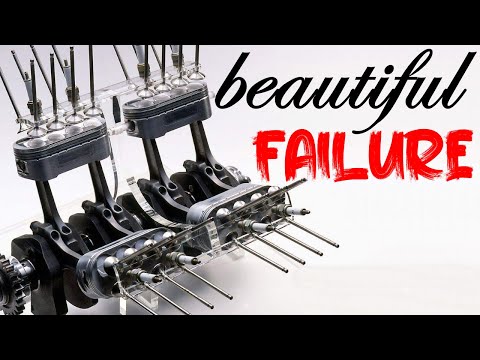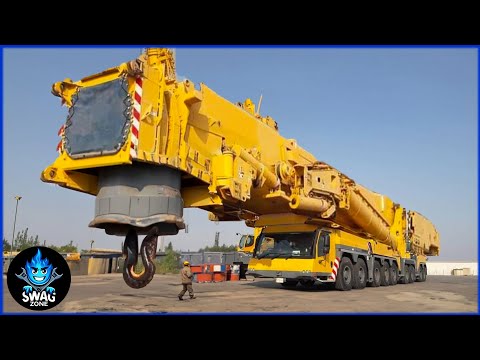The Unseen Achievement of Honda's Oval Piston Engine - A different perspective on the Honda NR story

Let me ask you a question. Which of these shapes is the best shape for sealing something? And it doesn't matter what you're sealing; water, air, oil, combustion, coolant. Doesn't matter Which shape seals the best? What do you think ? Well while you think about the answer I'll get the advertising portion of the video out of the way by telling you that today's video has been brought to you by Surfshark. Now Surfshark is a virtual private network aka VPN meaning that it makes it very difficult for internet service providers and pretty much anyone else to track and control what you do online. Well, okay but why would you care your internet is fine as it is right? Well, yeah but remember that show on Netflix that you always wanted to watch but you can't because you don't live in the "right" country? Well Surfshark can virtually place you in more than 90 different countries worldwide, meaning that there's no streaming library content that you can't watch anymore Or maybe a website is blocking you because of your location? Not with Surfshark Or maybe you're traveling and want to have access to content and perks available exclusively in your home country? Not a problem with Surfshark. Or maybe you're just tired of horrible personalized ads and cookie constant pop-ups? Well, Surfshark gets rid of those as well and it does so much more for your online security and privacy . And here's the good part: you can get it for 83% off
If you follow the link down in the description and use DRIVING4ANSWERS as your promo code This is going to get you three additional months of Surfshark for free plus additional 27 months for free of powerful anti-virus protection. If that's not a good deal then I don't know what is Okay, now back to our question. Which shape is the best for sealing? Well it's a circle. Why is it a circle? Well that's because a circle is the simplest and most uniform shape of all and chances are very high that wherever you need to seal something you're gonna find a circle in the design and this is why pistons have been circular pretty much since day one and will likely continue to be circular in the future. And this is why all non-circular attempts at internal combustion have ultimately failed to either enter or stay in the mainstream. They may have produced some truly admirable engines but they were more complex and expensive to produce without offering any justifiable benefits over the traditional circular piston design. Now here's another question
If I know that a circular shape is best for sealing then certainly Honda's engineers know that as well And if there's a century of circular piston engines clearly demonstrating that the design works Then why would someone invest an incredible amount of time, money and human resources to try and reinvent the wheel by developing an oval piston engine If it seems pretty likely that the design is going to ultimately fail. Well to answer that question we have to process a cocktail of history, mechanics and human persistence. Let's start with history Now the year is 1960 and Honda started an ambitious campaign to try and dominate the world of motorcycle racing, and indeed in a matter of just a few years they started winning races left and right with their motorcycles equipped with four stroke engines. But by the mid-60s most
other manufacturers and racing teams jumped onto the bandwagon of switching to two-stroke engines Now this decision really was a no-brainer at the time because at least in theory a two-stroke engine enables twice the power at half the weight because with a two-stroke you don't need camshafts, valves, and lifters and big complicated cylinder heads to house all of this And you don't need chains or belts to drive the camshafts and the only penalty you really pay with a two-stroke is increased emissions and reduced fuel efficiency but we're talking about racing in the 60s here and emissions and efficiency really weren't on the list of priorities. But despite the two-stroke trend Honda remained faithful to four-stroke engines. Founder Soichiro Honda is famous for disliking two-stroke engines. A sentiment he spread throughout the company
But Honda did more than just remain faithful. They kept trailblazing and pushing forward in the field, and by 1966 they did what no other manufacturer did before, and that is to score podiums in every single one of the five different classes of the world motorcycle grand prix. This bike the RC166 perhaps best exemplifies how far Honda managed to push the four-stroke engine. This bike raced in the 250 cc class back in 66 when it was piloted by legend Mike Hailwwod. Inside the bike is a inline
six-cylinder engine with only 250 cc of displacement, with four camshafts and 24 valves and it revved to almost 20.000 rpm. To make this possible, this degree of miniaturization in an age before CAD software and CNC machines required incredible persistence, dedication and precision So in 1966 Honda proved their point. Their four-stroke engines were amazing, reliable, they featured clockwork precision. But most importantly they could beat equivalent two-stroke engines So in 1967, with nothing left to prove Honda retired from the world of Motorcycle Grand Prix racing and instead decided to shift its focus on developing mass-produced cars. Instead of chasing power
you know, and performance Honda was now chasing environmental responsibility and fuel economy And in 1973 they released the CVCC equipped Honda Civic, making Honda the first ever manufacturer to release a car in full compliance of the clean air act passed by the U.S congress. But this shift to cars came at a price, and the price was paid by motorcycles. Two-thirds of the staff working in the motorcycle division were transferred to now work on cars. Although Honda did release some important and iconic and prominent motorcycles throughout the 70s, these bikes were based on technology back from the 60s. There was no innovation. Of course, the reduction in personnel played a part in this but the main reason behind the lack of innovation was that Honda was no longer racing Without racing there is no drive to create new technology to beat the competition. Without racing there is no suitable environment where you can test this new technology. By 1977 Honda realized
where this would end. Honda would end up lagging behind other manufacturers in terms of technology and innovation. So in the same year, exactly a decade after they had left the world of motorcycle grand prix racing, Honda announced their return. But things had changed during their absence Two-stroke engines had advanced dramatically and they were now the norm in motorcycle racing In fact back in 77 the rules also did not favor four strokes. There was no displacement advantage for four strokes and the rules simply stated that the maximum allowed number of cylinders was four and the maximum capacity was 500 cc, and this was the same for both four strokes and two strokes Now when a piston travels from top to bottom or vice versa that's one stroke and as the name implies a two stroke needs only two strokes to complete a full combustion cycle, whereas a four stroke needs four strokes to complete a full combustion cycle. Intake, compression, power/combustion and exhaust all occur separately and independently in a four-stroke engine. While the design of
the two-stroke allows it to complete intake and compression and power and exhaust pretty much simultaneously. This means that in a two-stroke engine whenever the piston is at the top the spark plug fires and combustion occurs. In a four-stroke combustion occurs only every other time when the piston is at the top. This means that a two-stroke engine achieves twice as many power strokes at the same rpm, meaning that it can achieve more power and generate more output and performance from the same displacement and at the same rpm compared to a four-stroke engine. Despite these advantages of the two-stroke Honda once again decided to remain faithful to four strokes and try to beat the competition on an uneven playing field right after coming out of a decade along hibernation So they started putting together a team to work on the NR project. NR being "new racing". Now Honda's goal was also to foster innovative thinking, and you know new talents, which would act as key people in the future. So many of the 100 members of the NR project were actually recent college graduates
So the NR team got to thinking and of course very quickly they figured out that if you want to beat a two-stroke with a four-stroke of equal displacement then you need to rev twice as high if you can't make the same torque at the same rpm because you're doing half the power strokes then you need to rev twice as high in order to generate the same power output. Most two strokes of the time were revving to around 10 - 12.000 rpm and they made peak power there so Honda decided that their four-stroke had to rev to 23.000 rpm in order to generate a competitive power output
of 130 horsepower. Now to rev to this ridiculous rpm you have to make it possible for the engine to take in and push out massive amounts of air very very quickly. Now to increase the breathing capacity of the engine there's many things you can do. One of the first things most engineers would do is increase the size of the intake and the exhaust valves. But this has a limit, because eventually you run out of combustion chamber space and you have to increase the bore in order to increase the size of the combustion chamber. But increasing the bore means increasing the displacement and that's something Honda couldn't do. But fortunately for Honda the world motorcycle grand prix
rulebook only said 500 cc and four cylinders without explicitly defining what they meant by cylinder Probably because they never expected anyone to be crazy enough to make anything other than a round engine cylinder. But Honda was crazy enough to pursue a non-cylindrical cylinder So they came up with this: if the cylinder was oval instead of round that they could fit more valves into it and sustain the airflow needed to generate 23 000 rpm. Of course an oval piston is something no one had ever attempted before and so Honda found itself in completely uncharted territory Chasing a dream of a V4 engine with four oval pistons and 32 valves all packed into only 500cc of displacement Of course the novel approach meant that more issues and problems appeared during the prototyping and development stage then it was possible to count. Toshimitsu Yoshimura, an engineer involved in the NR project remembers it like this, he said: "When i look back at it i'm not sure if we were experimenting with cutting edge technologies or obsessed with foolish ideas The engine faced two main obstacles. The first one was the piston rings. Remember, a circle is the best
shape for sealing. This is also because a circle is relatively easy to machine accurately. So machining oval piston rings proved to be the ultimate machining nightmare for Honda. Initially they experimented with what they called a "walking stick" style piston ring. This was essentially a split piece piston ring, each piece consisting of a shape which look like a walking stick. Now after a lot of experimentation and trial and error and effort and time and money they had to abandon this design It simply didn't work. So they returned to the, you know, traditional single piece piston ring and then this too needed a lot of experimentation and trial and error until sufficient machining accuracy was achieved The second major obstacle were the rods and the piston pin. A circle is also best for
sealing because a circle moves in a relatively uniform way and its movement is easy to control The elongated shape of the piston meant that it was more susceptible to rocking and wobbling in the cylinder meaning that it needed two connecting rods to control its movement and stabilize it But of course an elongated piston together with two rods required a very long piston pin to put it all together. Now at high rpms, when the complex forces acting on engine internals would get high enough this caused the long piston pin to flex and break everything and this is because of course it's impossible to keep a piston perfectly level in the cylinder and it's impossible to prevent the crankshaft from flexing a bit. This means that the two connecting rods don't move in a perfectly equal manner which leads to the piston pin flexing, putting strain on everything and breaking everything. But after more endless experimentation and trial and error sustained by incredible persistence Honda's engineers managed to overcome all of these development obstacles one by one And the first race-ready NR500 motorcycle rolled out onto the racetrack in August of 1979 to race at the British grand prix held at Silverstone. But the debut was a debacle. Two bikes were entered into the race and they barely managed to qualify. Once they did,
the first bike crashed at the very first corner after the engine spilled oil onto the rear tire The second bike had to retire after only seven laps due to ignition problems while running second last Mick Grant, my goodness it's Mick Grant on the Honda. A bitterly bitterly disappointed Mick Grant who fortunately looks all right and the new honda v4 of Mick Grant who has done so much in Japan to get that machine going for this race is out of the race on the very first lap. This embarrassing debut made it obvious that even incredible persistence has its limits and that the oval piston technology still had a long way to go. The engine could not yet rev to 23.000 rpm and it barely managed to scratch the 110 horsepower mark which was way off the target of 130 horsepower. But Honda's engineers didn't give up. They took the blows, learned from their mistakes, and by 1982 they managed 19.500 rpm and 135 horsepower which was a pretty admirable result but the bike still wasn't winning any races it was still not competitive. Why? Well because a V4 engine with eight connecting rods, eight spark plugs
32 valves big oval pistons and big oval cylinder heads wasn't just incredibly complex it was also 20 kilograms heavier than any of the competitor engines, and it wasn't just heavier the bulky complex shape put the weight in the wrong place negatively affecting the center of gravity and the overall balance of the bike. The best result the NR500 ever achieved was when rider Freddie Spencer in 1981 managed to briefly hold fifth place before the bike broke down. By 1982 Honda finally caved to pressure from shareholders fans and pretty much anyone else and developed a two-stroke bike, the NS500 to race alongside the NR500. Pretty soon the NS500 made the NR500 look very slow and very silly and already in 1983 again piloted by the same person the NS500 won the world motorcycle grand prix. the NR500 was retired in the same year without ever winning a single grand prix race. It never even came close to doing that which it was designed for
So what is the rational conclusion to all of this? I think it's something like this: Don't waste time and money trying to reinvent the wheel. The circular piston works and there's a very long track record to prove it. Therefore trying to do something different is a waste of resources The oval piston engine is an abject failure because it didn't even come close to achieving its goal of becoming a grand prix champion. Right, this is the most rational conclusion? Actually no this would be a little more than a very short-sighted and naive conclusion. The real conclusion is this: Failure is not the opposite of success and the NR made immeasurable contributions to motorcycle technology. Wait, what? How did it contribute anything if the oval piston design has
been abandoned and never used since? Well by trying to make the impossible possible Honda's engineers experimented with and trailblazed numerous new technologies most of which are used in motorcycles to this day. For example, they experimented with and successfully employed magnesium and titanium alloys to reduce weight. This was a first and something that everybody in the competition of the motorcycle grand prix quickly copied. They also developed, improved and perfected numerous new machining techniques and helped advance numerically controlled machining which made it possible to machine more complex and different shapes. They also had to deal with aggressive engine braking and to do that they developed a back torque limiter, it's something most bikes have on them today we just call it different. We call it a slipper clutch. And many other technological advancements made during the development of the NR and the oval piston engine later made their way to other motorcycles and are used to this day. But the oval piston story did not end in 1983 because
in 1992 honda released the NR a motorcycle which proudly wore the name and featured the technology of a racing bike that won nothing. With a 750cc oval piston engine churning out 125 horsepower at 14.000 rpm and a dry weight of 223 kilograms it was just like the bike which inspired it Not as fast as the competition but dramatically more complex and expensive. At 50.000 dollars
which is 105.000 dollars in today's money it was the most expensive motorcycle off its day But even though it had no racing successes to celebrate Honda made 200 NR motorcycles as the definitive statement and proof of dedication and perseverance as if to say "We're the only ones capable of making this absurd technology work and we even managed to perfect it to the point where we can mass produce it" Honda learned many valuable lessons from its failure They were proud of it and they wanted to show all of their achievements in one bike to the whole world Now an interesting little fact, the race version the NR500 had pistons with flat sides The road going version, the NR, had oval sides in an effort to bring the shape of the piston that bit more closer to circular in an effort to ease manufacture and improve sealing So the final conclusion is that a failure is not a failure as long as you learn from it Look at any successful individual anyone from a business person to an athlete or anyone in between And you will see that they carry the valuable experiences of many many failures under their belts. The same holds true for building engines, winning races or pursuing any other goal Be ready to fail but also be ready to learn and grow from it and if you're able to do that then success is just a matter of time. And in 2002 when moto gp rules changed once again this time to favor four strokes, a technology whose improved efficiency and reduced emissions gave it a brighter future, Honda would once again prove that they weren't afraid to go against the grain and take the risk of stepping into the unknown. They developed a V-engine with an odd number of cylinder A V5. A completely unprecedented design which in the hands of legend Valentino Rossi
obliterated the competition. By the way I have a video on the V5 which explains how it works it's super super boring. Yeah that's pretty much it for today, I hope you enjoyed that. As always thanks a lot for watching and I'll be seeing you soon with more fun and useful stuff on the d4a channel
2022-09-12 13:32


